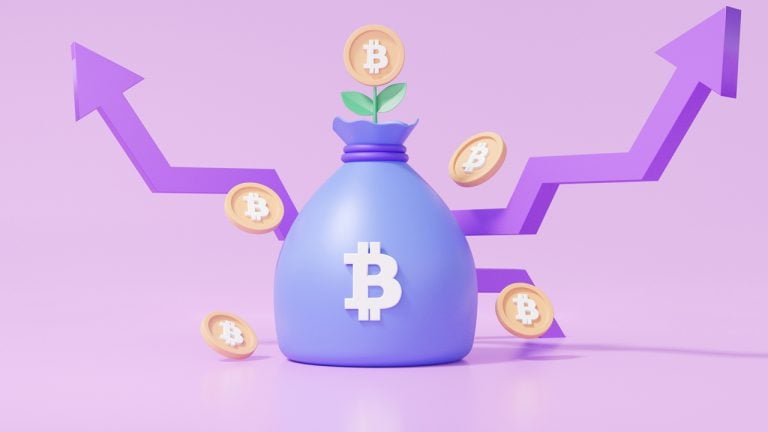 While many crypto exchanges have seemingly embraced the use of proof-of-reserves (PoR) to showcase their transparency and reassure nervous users, crypto analyst Martin Hiesboeck insists such so-called proofs are susceptible to manipulation or misrepresentation. He added that PoRs alone are not a suitable method of verifying an exchange’s reserves because they do not “account for […]
While many crypto exchanges have seemingly embraced the use of proof-of-reserves (PoR) to showcase their transparency and reassure nervous users, crypto analyst Martin Hiesboeck insists such so-called proofs are susceptible to manipulation or misrepresentation. He added that PoRs alone are not a suitable method of verifying an exchange’s reserves because they do not “account for […]
GMX’s technical indicator hints at a strong correction in December, which may push its price toward $40.
The price of GMX rallied to its second-highest level in history on Dec. 1 as traders assessed the decentralized exchange’s ability to evolve as a serious competitor to its top rival Uniswap.
GMX established an intraday high of $54.50 in a recovery that started on Nov. 29 from $40.50. Its rally’s beginning coincided with crypto research firm Delphi Digital’s tweet on the GMX decentralized exchange, as shown below.

Notably, GMX earned about $1.15 million in daily trading fees on Nov. 28, which surpassed Uniswap’s $1.06 million in trading fees on the same day.

This seemingly renewed buying sentiment in the GMX market, helping its price rally 35% to $54.50 afterward.
Moreover, GMX also benefited from the growing discontent against centralized exchanges in the wake of the FTX collapse. The decentralized exchange’s revenue rose by 107% to $5 million in November, boosted by a 128% increase in annualized trading volume and a 31% rise in daily active users.

In comparison, Uniswap’s annualized revenue increased by about 75% and daily active users by 8%.
Independent market analyst Zen noted that GMX’s outperformance could have stemmed from its tokenholders receiving a good portion of all trading fees — about 30%, according to GMX’s official declaration.
On the other hand, holders of Uniswap’s native token, UNI, do not receive shares from the platform’s trading fees.
“[GMX is] an obvious buy and hold during this bear market,” Zen added, saying that it is “consistently the second highest earning protocol after Uniswap.” An excerpt:
“Leverage trading becomes dominant during bear markets. FTX and Bybit grew a lot last time. Expecting [a] similar story here. No big FDV overhang.”
From a technical analysis perspective, GMX’s ongoing bull run risks exhaustion in the coming days.
Related: FTX’s collapse could change crypto industry governance standards for good
On the daily chart, GMX’s price tests its multi-month ascending trendline resistance for a potential pullback based on its previous corrections after testing the same trendline. In doing so, the token eyes a decline toward the ascending trendline support.

As of Dec. 1, GMX faced an increase in selling pressure near the trendline resistance at around $53. The GMX/USD pair could drop to the current trendline support near $42, which coincides with its 50-day exponential moving average (50-day EMA; the red wave) and its 0.618 Fib line.
In other words, GMX could drop by nearly 20% from its current price levels by the end of 2022.
This article does not contain investment advice or recommendations. Every investment and trading move involves risk, and readers should conduct their own research when making a decision.

Investors piled into stablecoins following FTX’s collapse, and an uptick in DEX activity suggests a rising interest in self-custody options.
On-chain data from Glassnode show Bitcoin’s (BTC) movements hit a new record for the largest net decline in aggregate BTC balances on exchanges, reducing by 72,900 BTC in one week.
A similar movement occurred in April 2020, November 2020 and June 2022, with the current outflow leaving around 2.25 million BTC on exchanges.

While Ether (ETH) did not see an all-time high outflow from exchanges, 1.1 million ETH was withdrawn from exchanges over the last week. According to Glassnode, this marks the largest 30-day exchange balance decline since September 2020 during the decentralized finance (DeFi) summer in the same year.

Related: Exchange outflows hit historic highs as Bitcoin investors self-custody
Contrary to Bitcoin’s and Ether’s declining balances on exchanges, stablecoin balances remain net positive on exchanges, meaning their balances are growing. Over $1.04 billion in Tether (USDT), USD Coin (USDC), Binance USD (BUSD) and Dai (DAI) moved to exchanges on Nov. 10. This marks Nov. 10 as the seventh-largest stablecoin inflow to exchanges.

According to Glassnode, with the major influx of stablecoins to exchanges, the current $41.186 billion total is an all-time high.

Bitcoin miners continue to remain under extreme pressure, and data highlights that hash prices are at all-time lows. The record-low hash prices led to miners selling around 9.5% of their treasuries, around 7.76 million BTC. This sell-off marks the sharpest monthly decline for miner balances since September 2018.

Delphi Digital used asset baskets to analyze performance between decentralized exchange (DEX) and centralized exchange (CEX) tokens and found that when comparing the basket prices to BTC, the DEX basket gained 24% whereas the CEX basket is down 2%.

Generally, on-chain activity correlates to overall Bitcoin, Ether and altcoin market sentiment, with the current FTX chaos catalyzing historic exchange outflows and CEX tokens’ underperformance. A likely trend to emerge from the current chaos is a steady uptick in self-custodied cryptocurrencies and an increase in DEX use.
The views and opinions expressed here are solely those of the author and do not necessarily reflect the views of Cointelegraph.com. Every investment and trading move involves risk, you should conduct your own research when making a decision.
 While decentralized finance (defi) has created a plethora of protocols that make it so crypto assets can gather a yield, ten and a half years ago a bitcoin exchange called Bitcoinica introduced the first interest accruing system for bitcoin deposits. Despite being the first to test the waters, Bitcoinica eventually went bust after a series […]
While decentralized finance (defi) has created a plethora of protocols that make it so crypto assets can gather a yield, ten and a half years ago a bitcoin exchange called Bitcoinica introduced the first interest accruing system for bitcoin deposits. Despite being the first to test the waters, Bitcoinica eventually went bust after a series […]
The chief executive of the world’s largest crypto exchange by trading volume predicts that decentralized finance (DeFi) and decentralized exchange platforms (DEXes) will outshine their centralized counterparts in the long term. In a new interview on the Bankless YouTube channel, Binance CEO Changpeng Zhao predicts that in 10 years, decentralized blockchain projects will tower above […]
The post Binance CEO Changpeng Zhao Makes 10-Year Prediction for Decentralized Finance (DeFi) appeared first on The Daily Hodl.

The latest centralized exchange blockchain from LA Token claims to be the DeFi Hub for its users and is compatible with all Ethereum-based networks, though it is off to a slow start in an increasingly competitive ecosystem.
Crypto platform LA Token has become the latest exchange to launch its own blockchain with the LACHAIN network which it hopes will give its users access to decentralized finance (DeFi) products and a bridge between other networks.
The layer-1 Ethereum Virtual Machine (EVM)-compatible and WebAssembly (WASM)-compatible LACHAIN went live on Mar. 10 to help LA Token capitalize on expected future growth in demand for token bridges between networks. LA Token was launched in 2017 in the Cayman Islands. It has had $281.6 million in trading volume over the last 24 hours according to CoinGecko.
EVM compatibility allows tokens on the proof-of-stake LACHAIN to transfer seamlessly between other Ethereum-based networks such as Polygon (MATIC) and others including BNB Chain (formerly Binance Smart Chain). WASM is a competitor to EVM for smart contract platforms.
The new network’s main workload is expected to be in handling DeFi services as it is touted as “The DeFi Hub” on its website. As of now, the only dApp that appears to be on the network is LA Token’s own LADEX decentralized exchange.
LACHAIN has about $23 million in total value locked (TVL) as of the time of writing from 6 tokens including LA and wrapped versions of LA, Tether (USDT), MATIC, BNB, and Ether (ETH). There are currently jus678 total wallet addresses and four validators on the network. Each validator appears to be LA Token’s own wallets, however, this could not be confirmed as the exchange has not responded to a request for comment. As of the time of writing, there have been 194,615 transactions performed on-chain.
Related: Ethereum's TVL dominance drops to 55% as Bloomberg analyst paints $1.7K bearish target
LACHAIN is entering a highly competitive ecosystem of similar networks. Other centralized exchanges with their own blockchain networks include Crypto.com’s Cronos, and KuCoin with KCC. Currently, BNB Chain (formerly BSC) is the largest centralized exchange blockchain with a market cap of $8.3 billion in BNB tokens. Like with those exchanges, LA Token’s exchange token LA will be used to pay fees and gas on LACHAIN.
LA is down 1.4% over the last 24 hours and is trading at about $0.10 according to CoinGecko. It has fallen 94.2% from its $1.82 all-time high set in January 2018.
 Canada’s securities regulator has flagged tweets by Coinbase CEO Brian Armstrong and Kraken CEO Jesse Powell encouraging people to use non-custodial wallets to evade freeze orders by the Trudeau government. “We are aware of this information and have shared it with the RCMP and relevant federal authorities,” said the Canadian regulator. Tweets by CEOs of […]
Canada’s securities regulator has flagged tweets by Coinbase CEO Brian Armstrong and Kraken CEO Jesse Powell encouraging people to use non-custodial wallets to evade freeze orders by the Trudeau government. “We are aware of this information and have shared it with the RCMP and relevant federal authorities,” said the Canadian regulator. Tweets by CEOs of […] Bitmart, a cryptocurrency exchange, suffered an attack yesterday that exploited some security vulnerabilities in order to gain access to the funds of the exchange. The attack targeted the hot wallets of the platform, specifically the Ethereum and Binance Smart Chain-based wallets. The hackers managed to take almost $200 million in tokens from the platform. Bitmart […]
Bitmart, a cryptocurrency exchange, suffered an attack yesterday that exploited some security vulnerabilities in order to gain access to the funds of the exchange. The attack targeted the hot wallets of the platform, specifically the Ethereum and Binance Smart Chain-based wallets. The hackers managed to take almost $200 million in tokens from the platform. Bitmart […]
It's not a decentralized exchange in the truest sense of the word, but a peer-to-peer token swap platform under the oversight of Square.
Jack Dorsey, co-founder, and CEO of both Square and Twitter, released a white paper Friday detailing plans for Square's decentralized Bitcoin (BTC) exchange tbDEX. Unlike most decentralized exchanges, or DEXs, tbDEX will not utilize a trustless model, and therefore will not feature its own governance token. Instead, it is a message protocol designed to facilitate trust relationships without relying on a federation to control access.
The tbDEX also intends to include many features that make it far less decentralized than a DEX in the truest sense of the word. For starters, the protocol requires that all participants to pass background know-your-customer, or KYC, checks to comply with relevant regulations depending on a user's region. Users can only then connect their wallets to the exchange and swap coins with one another.
Furthermore, the white paper called for the deployment of blockchain analytic solutions, either built-in to the DEX or through a third party, to track transactions on the platform. Such a class of blockchain forensic solutions is potentially a controversial topic. Such a system would likely enable authorities to cross-reference payment IDs and public wallet addresses with KYC information to unveil personal identities behind transacting parties. However, supporters claim that such means of monitoring are necessary to prevent illicit activities.
But centralized features of the tbDEX could also win support from crypto enthusiasts. One distinguishing aspect discussed in the white paper is that of chargebacks, which doesn't exist on most DEXs. If implemented, the ability for Square to reverse transactions on the tbDEX could potentially stop irreversible loss suffered by investors during decentralized finance rug pulls. Square is currently encouraging feedback on the white paper on a newly created Twitter account.
We made a white paper. https://t.co/ffvYGjQQ7T
— TBD (@TBD54566975) November 19, 2021